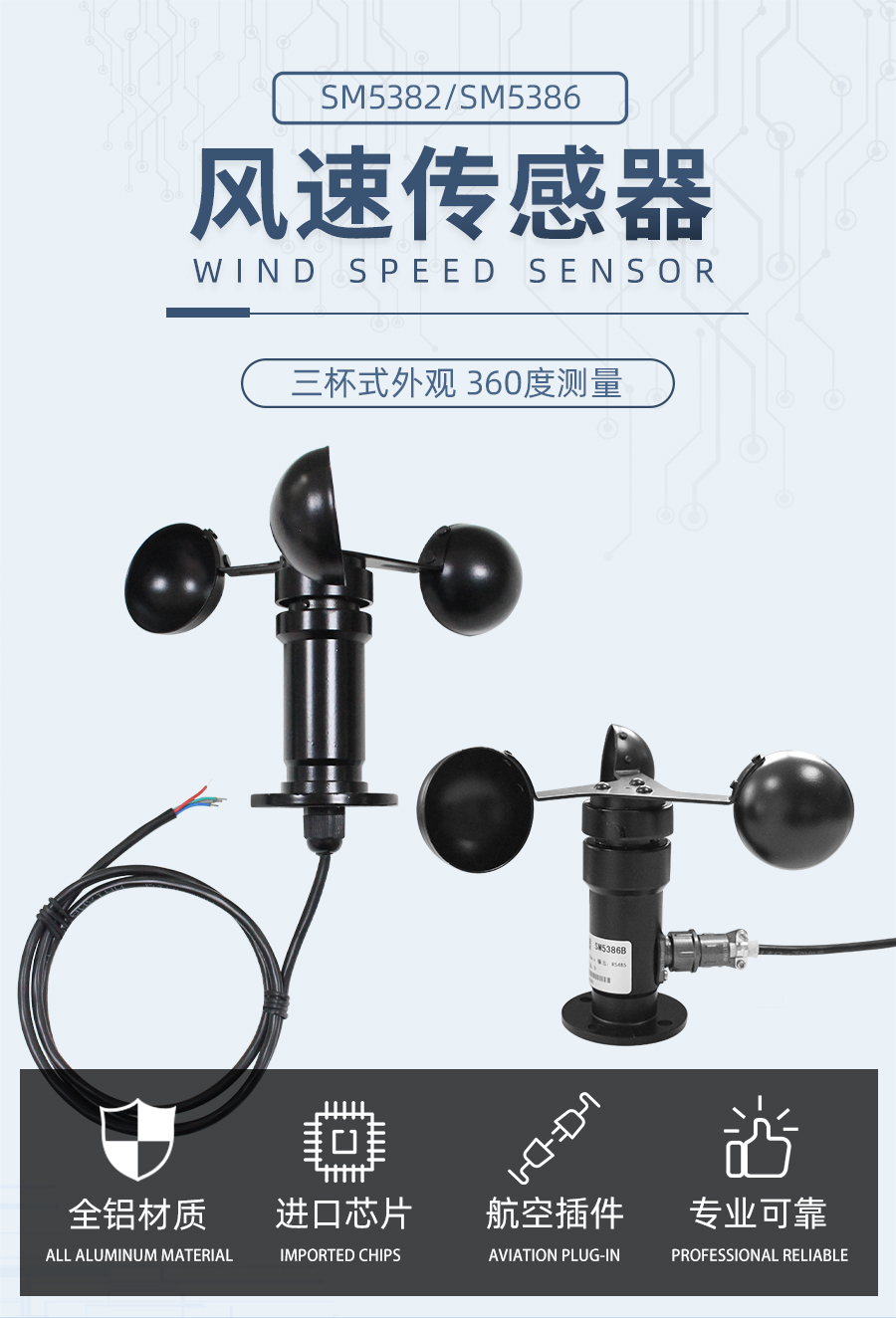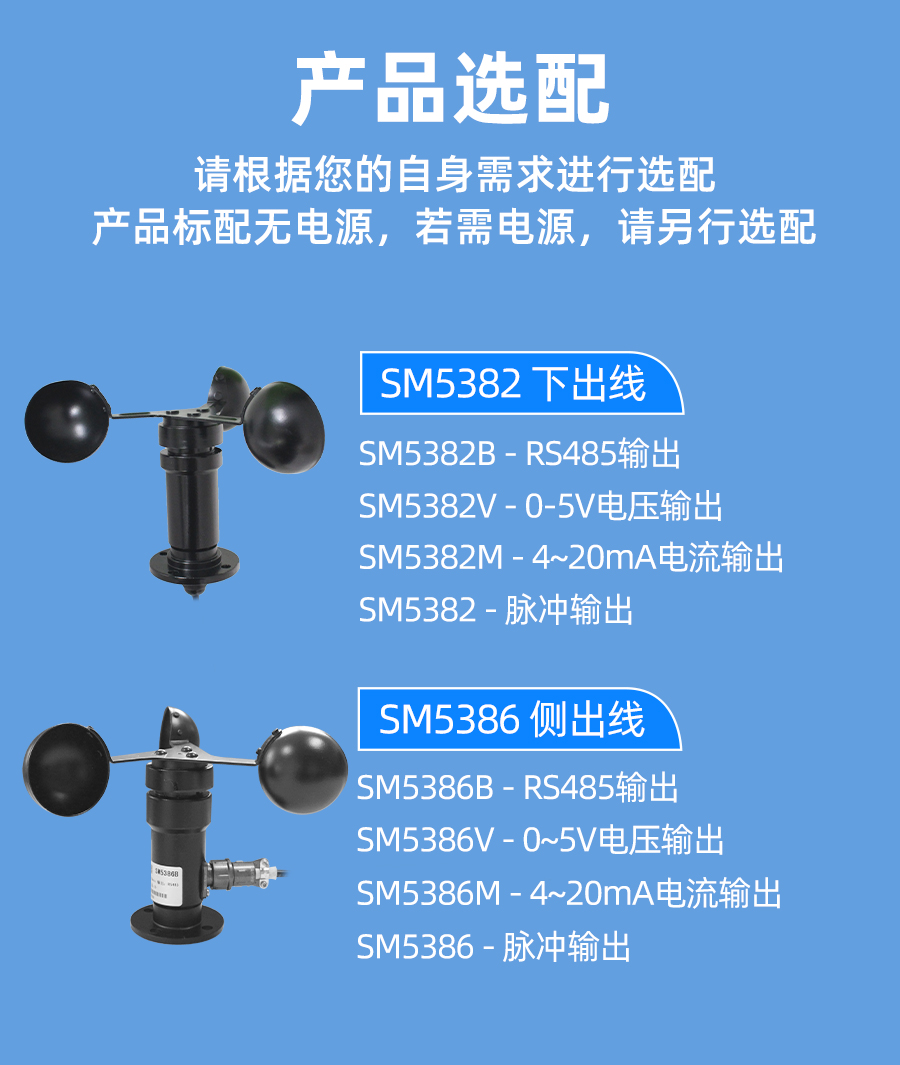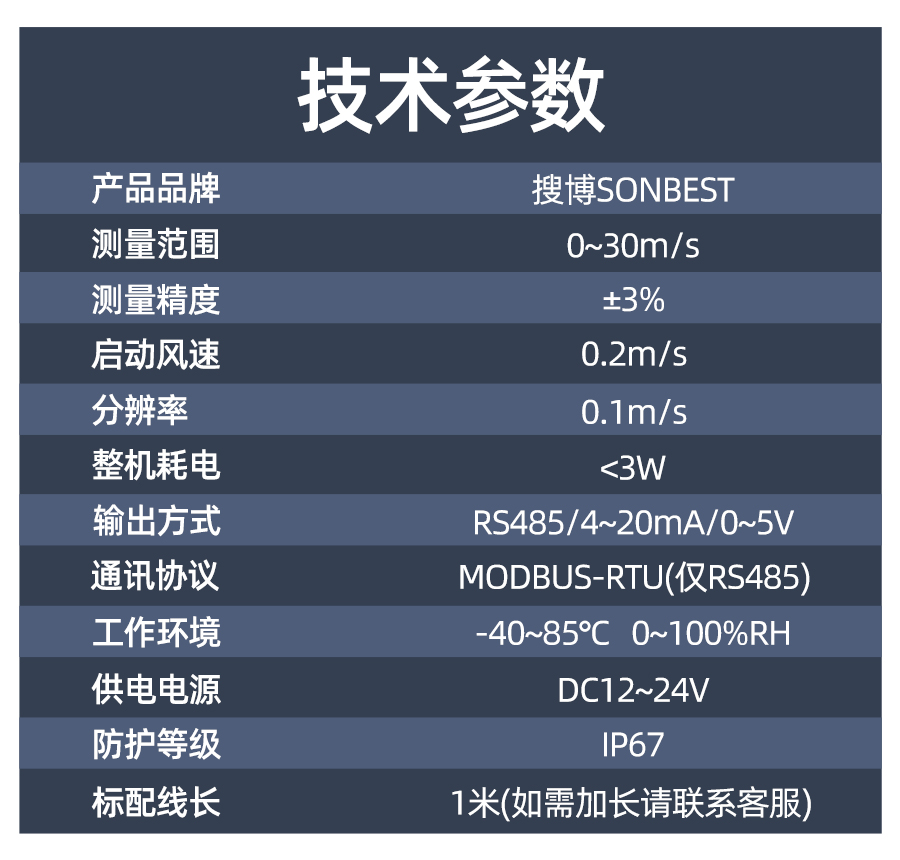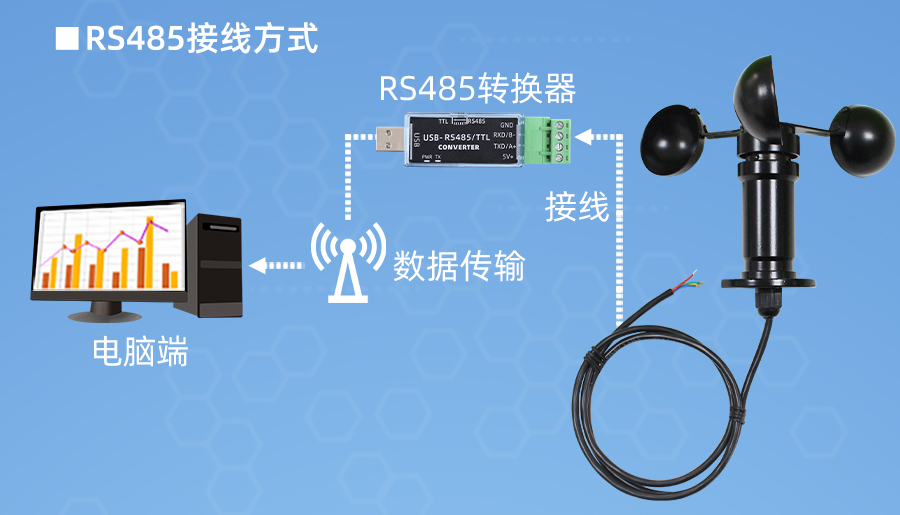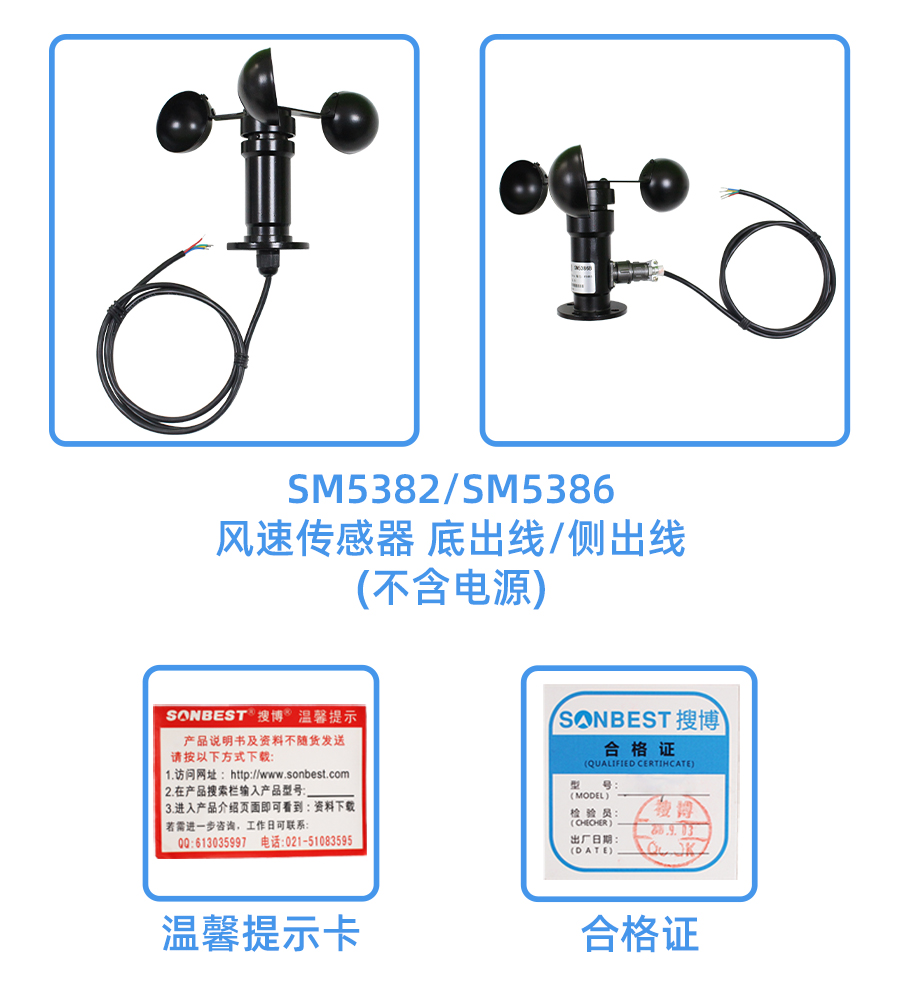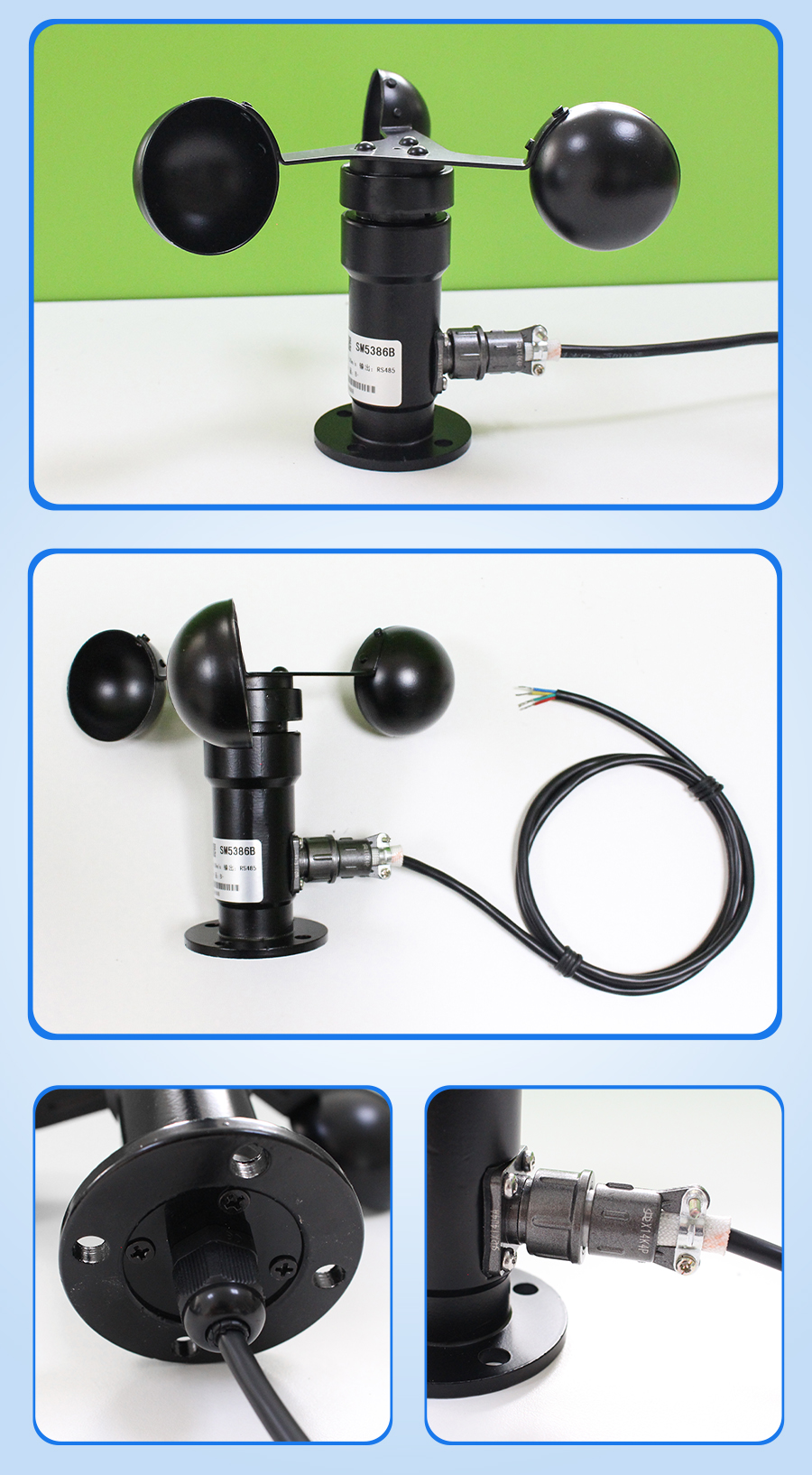SM5386Speed Sensor isSensor is a type of instrument designed to monitor wind speed. The instrument can continuously monitor wind speed and display remotely, and convert wind speed to Signal transmission to associated equipment. The wind speed sensor is made of aluminum alloy material, using special mold precision die-casting process, the dimensional tolerance is very small, the surface precision is very high, the internal circuit is protected, the whole sensor has high strength, weather resistance, anti-proof Corrosion and water resistance. The cable connector is a military plug with good anti-corrosion and anti-corrosion properties, which can guarantee the long-term use of the instrument.can be widely used in greenhouses, environmental protection, weather stations, ships, terminals, heavy machinery, cranes, ports, terminals, cable cars, any place where wind speed needs to be measured.
Technical Parameters
| Technical parameter | Parameter value |
| Brand | SONBEST |
| Wind speed range | 0~30m/s |
| Start wind | 0.2m/s |
| Wind speed accuracy | ±3% |
| Shell material | aluminum |
| Interface | RS485/4-20mA/DC0-5V |
| Power | DC12~24V 1A |
| Running temperature | -40~80°C |
| Working humidity | 5%RH~90%RH |
Product Selection
Product DesignRS485,4-20mA,DC0-5VMultiple output methods, the products are divided into the following models depending on the output method.| Product model | output method |
| SM5386B | RS485总线 |
| SM5386M | 4-20mA |
| SM5386V5 | DC0-5V |
Product Size
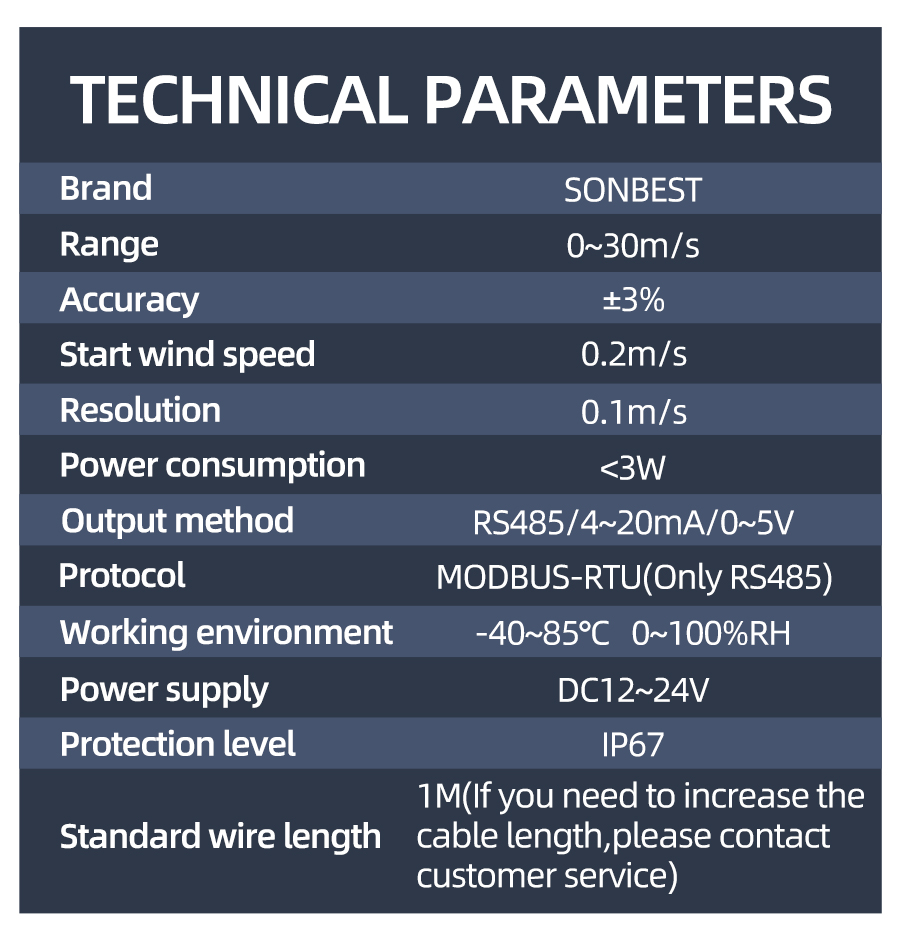
How to wiring?
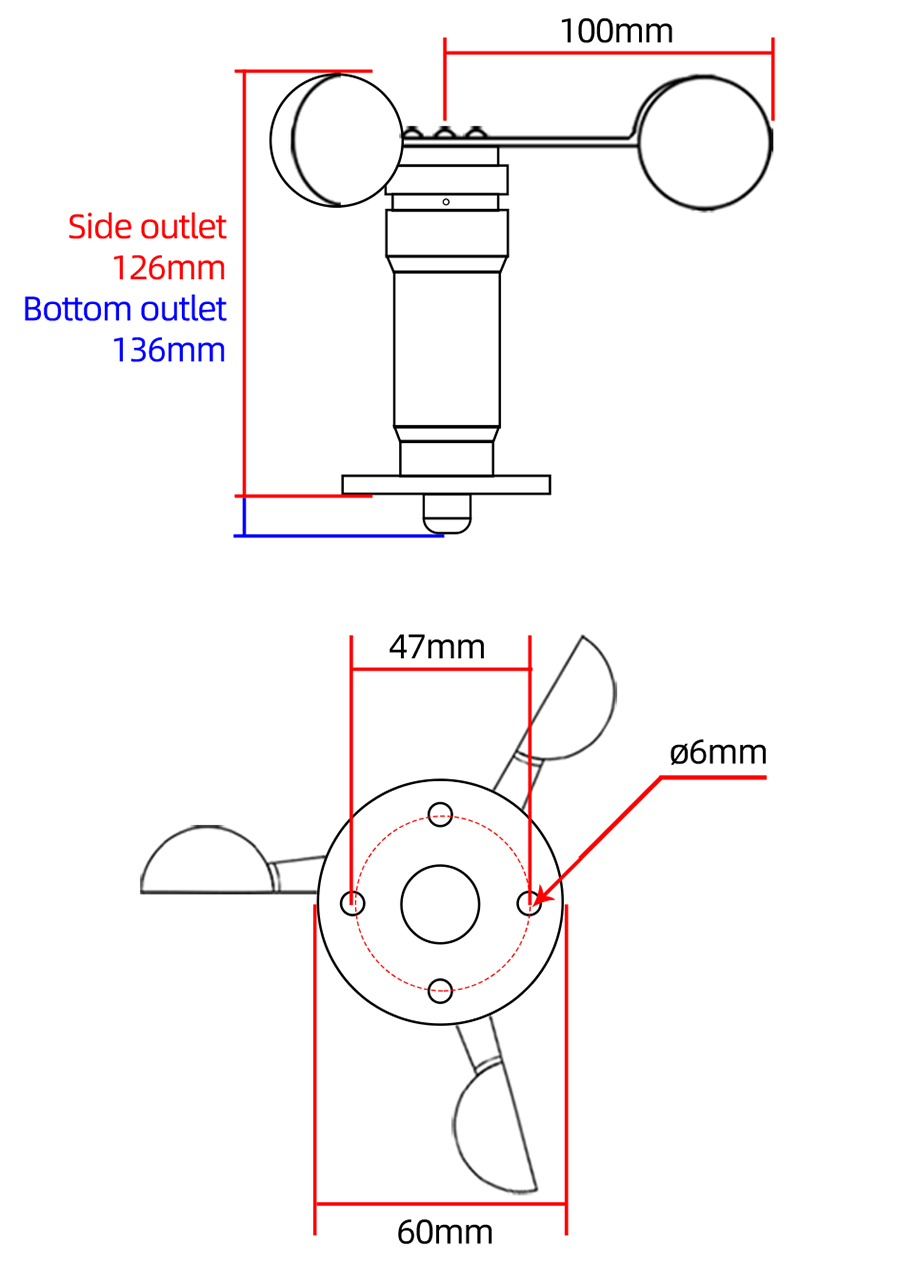
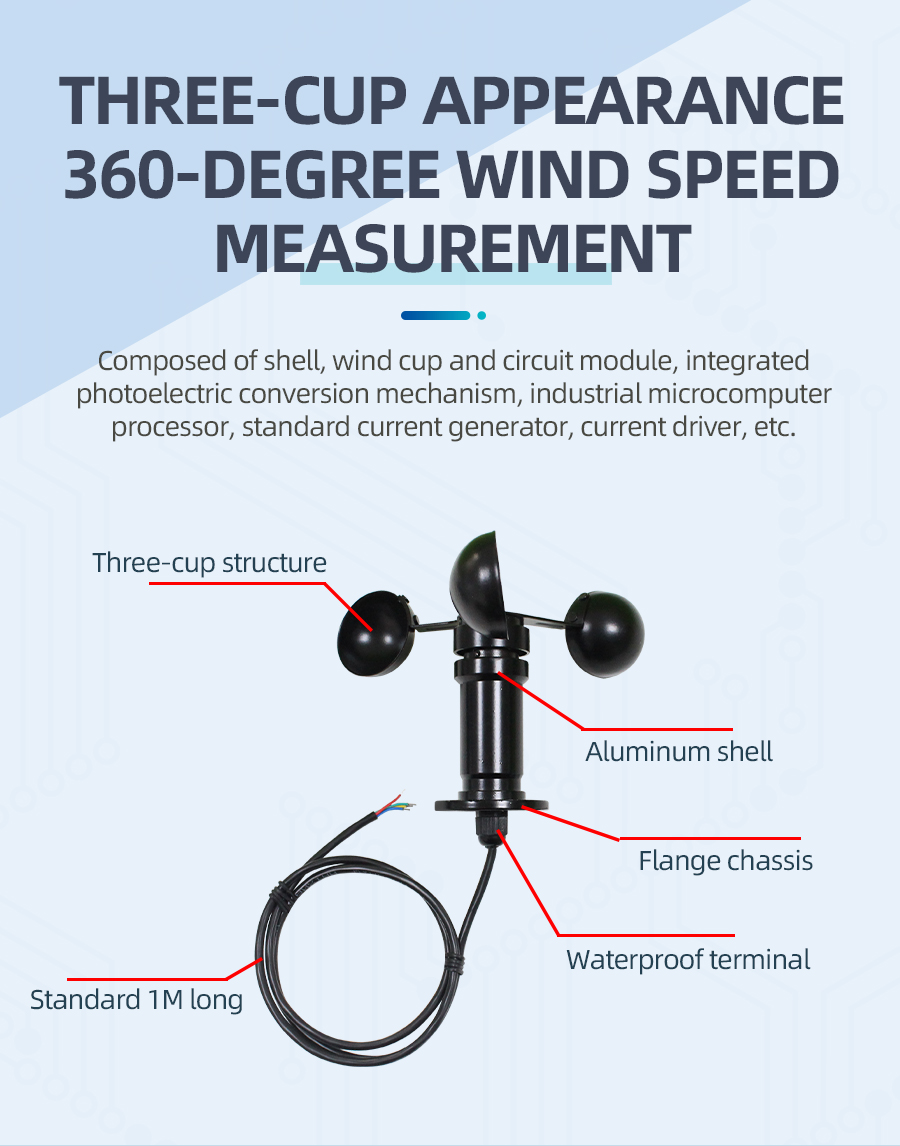
Why choose this product?
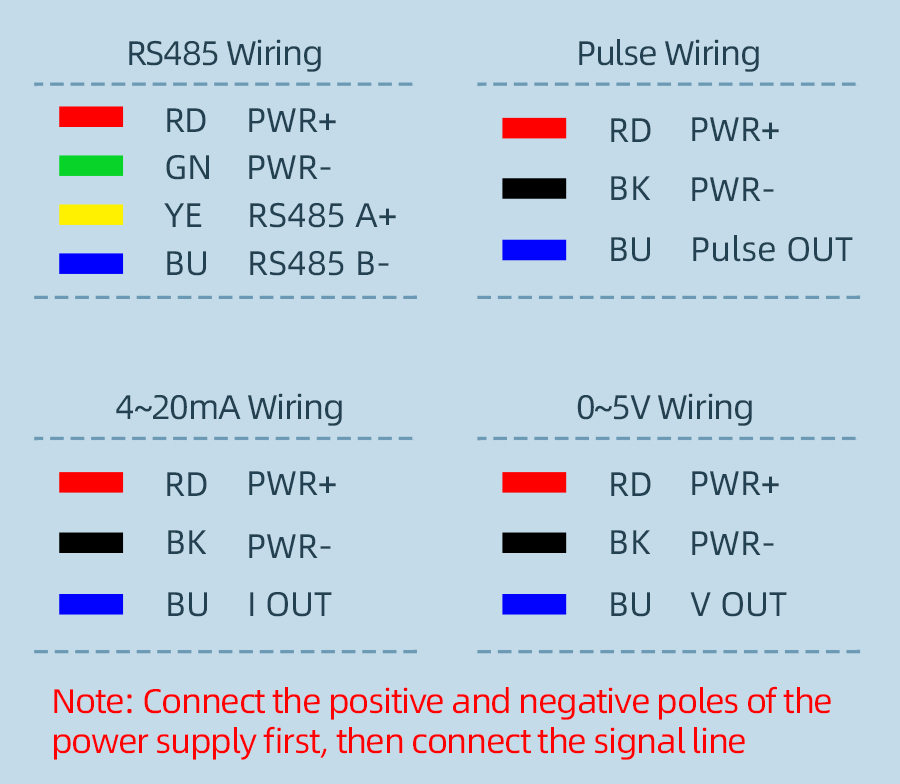
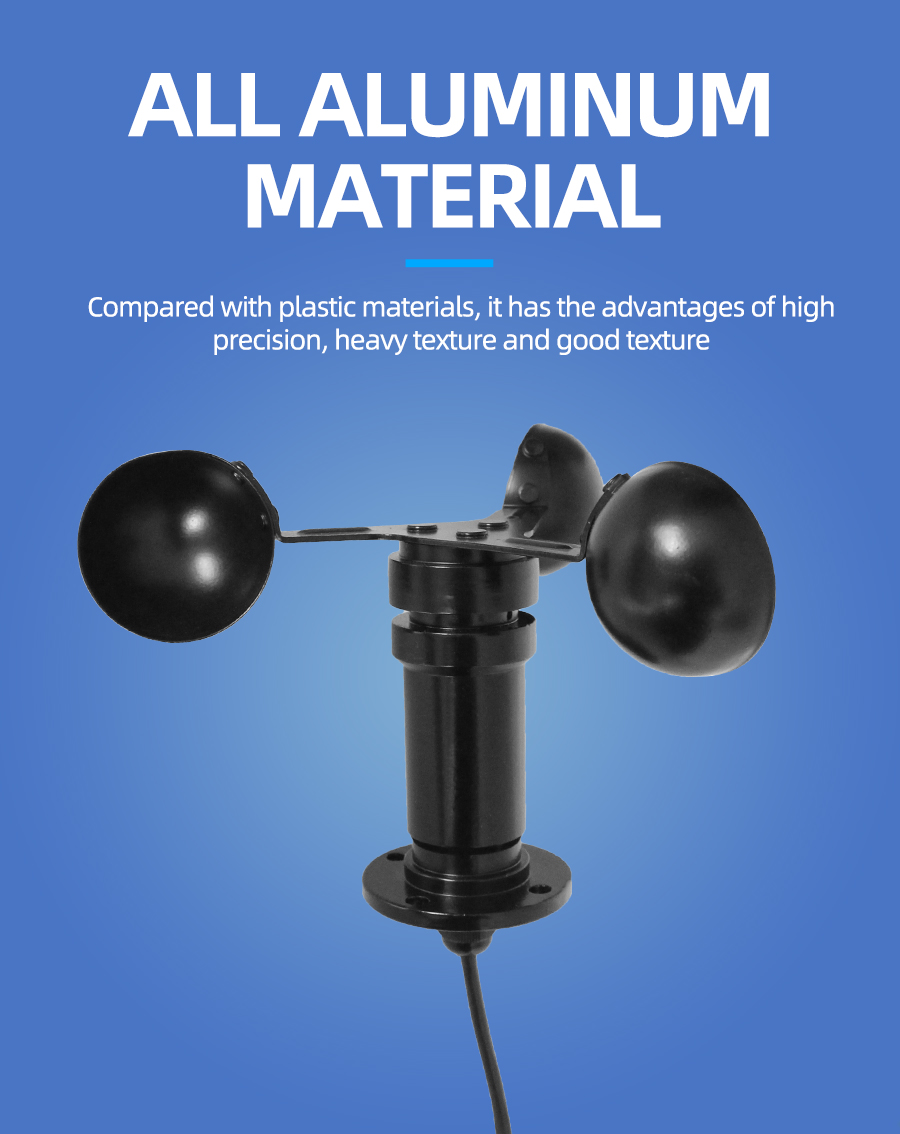
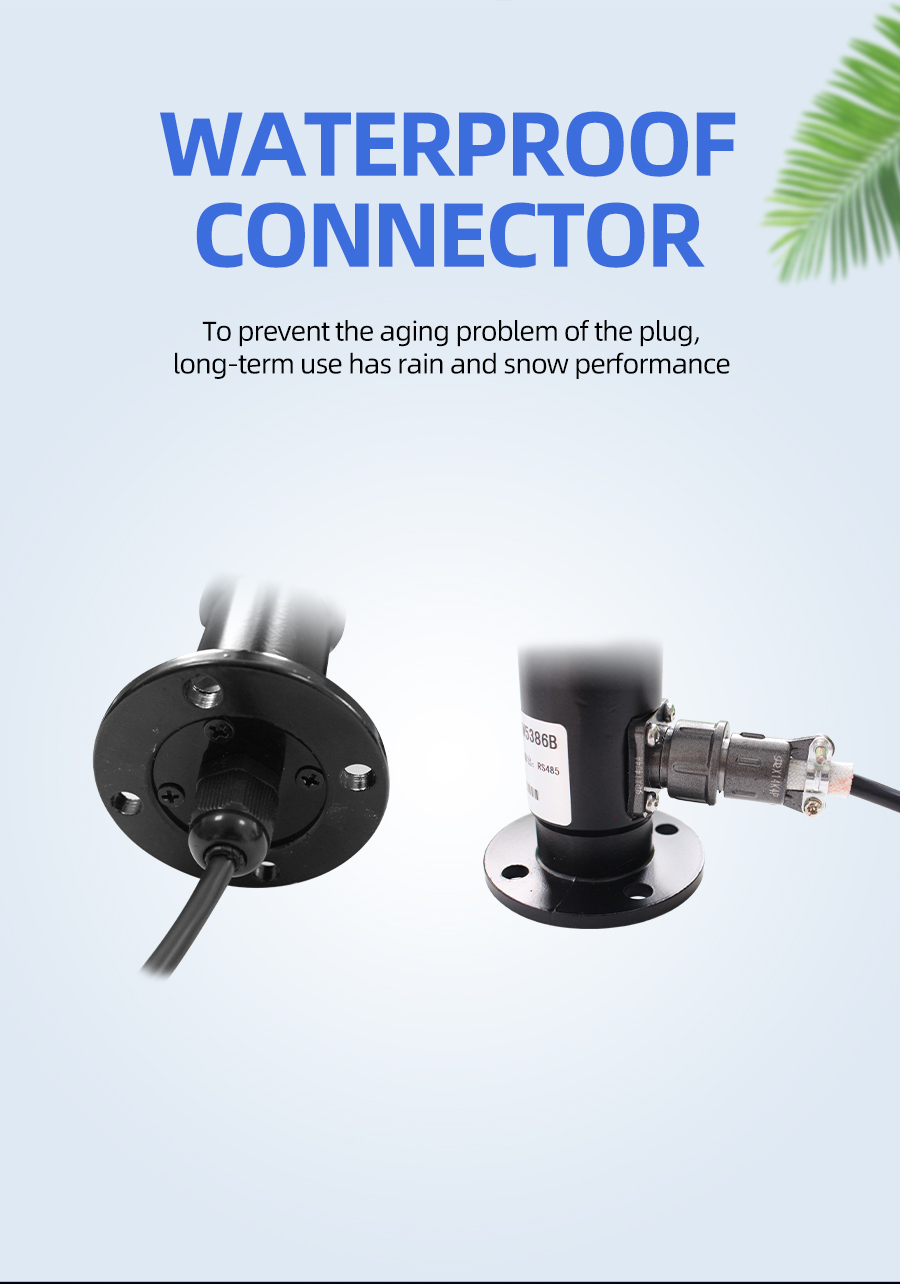
Application solution

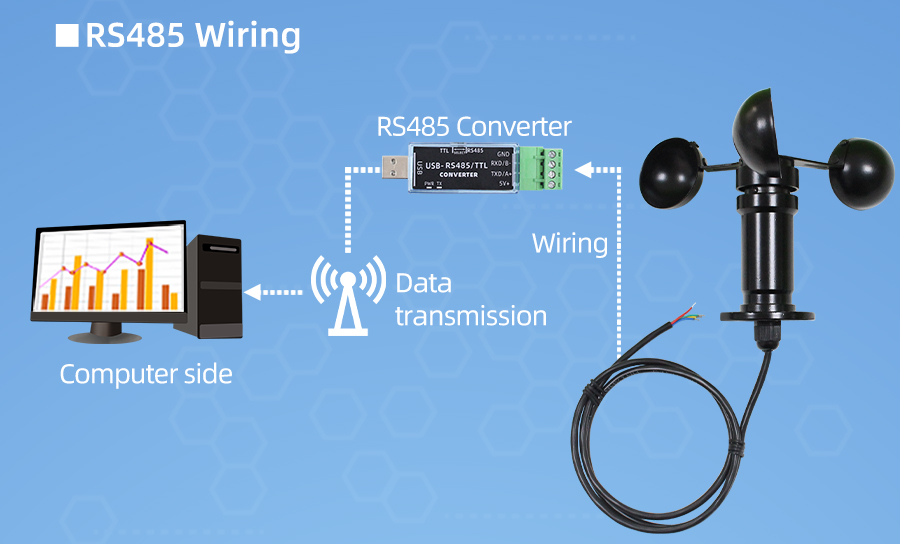
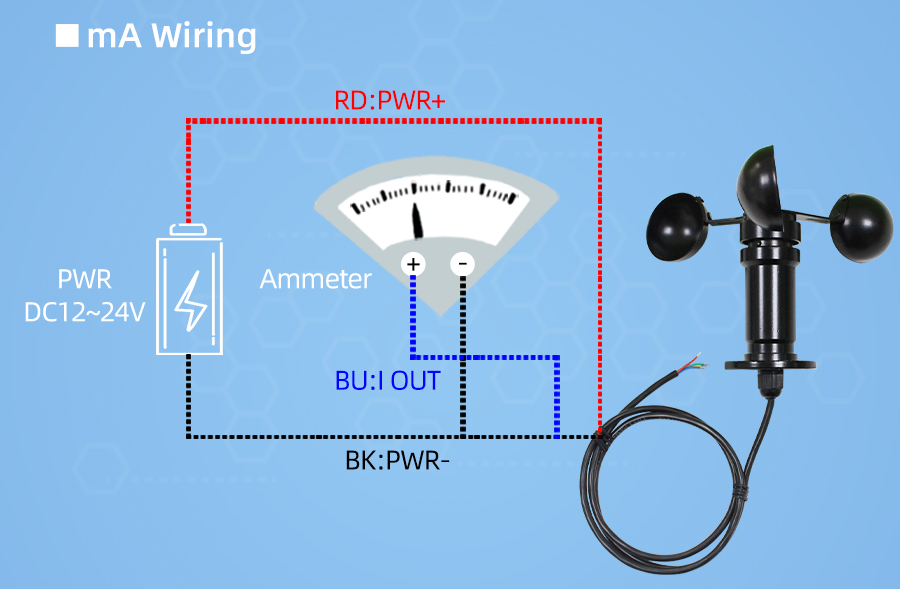
How to use?
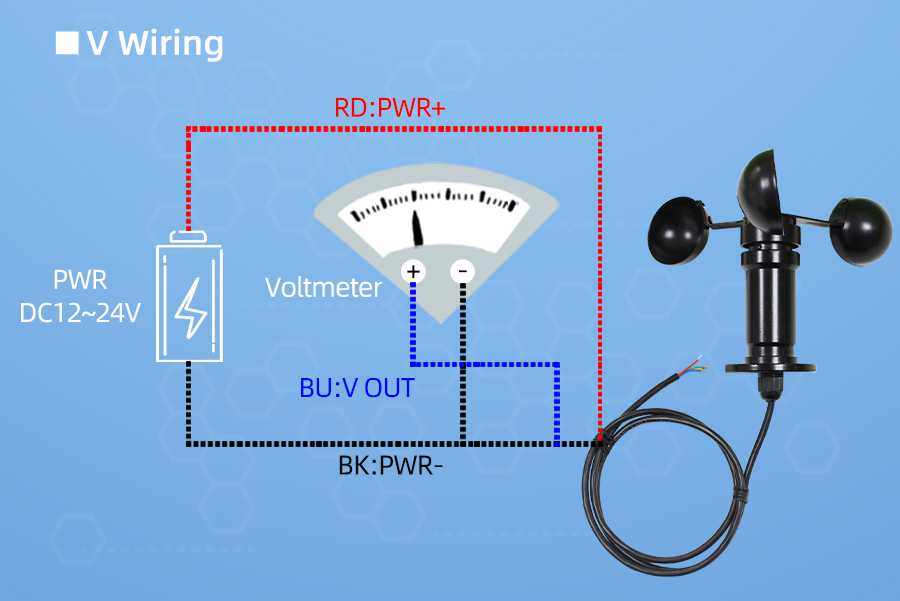

| current(mA) | wind speedValue (m/s) | Calculation Process |
| 4 | 0.0 | (30-0)*(4-4)÷(20-4)+0 |
| 5 | 1.9 | (30-0)*(5-4)÷(20-4)+0 |
| 6 | 3.8 | (30-0)*(6-4)÷(20-4)+0 |
| 7 | 5.6 | (30-0)*(7-4)÷(20-4)+0 |
| 8 | 7.5 | (30-0)*(8-4)÷(20-4)+0 |
| 9 | 9.4 | (30-0)*(9-4)÷(20-4)+0 |
| 10 | 11.3 | (30-0)*(10-4)÷(20-4)+0 |
| 11 | 13.1 | (30-0)*(11-4)÷(20-4)+0 |
| 12 | 15.0 | (30-0)*(12-4)÷(20-4)+0 |
| 13 | 16.9 | (30-0)*(13-4)÷(20-4)+0 |
| 14 | 18.8 | (30-0)*(14-4)÷(20-4)+0 |
| 15 | 20.6 | (30-0)*(15-4)÷(20-4)+0 |
| 16 | 22.5 | (30-0)*(16-4)÷(20-4)+0 |
| 17 | 24.4 | (30-0)*(17-4)÷(20-4)+0 |
| 18 | 26.3 | (30-0)*(18-4)÷(20-4)+0 |
| 19 | 28.1 | (30-0)*(19-4)÷(20-4)+0 |
| 20 | 30.0 | (30-0)*(20-4)÷(20-4)+0 |
For example, the range is 0~30m/s, the analog output is 0~5V voltage signal, wind speed and voltage The calculation relationship is as shown in the formula: C = (A2-A1) * (X-B1) / (B2-B1) + A1, where A2 is wind speed range upper limit, A1 is the lower limit of the range, B2 is voltage output range upper limit, B1 is the lower limit, X is the currently read wind speed value, and C is the calculated voltage value. The list of commonly used values is as follows:
| voltage(V) | wind speedValue (m/s) | Calculation Process |
| 0 | 0.0 | (30-0)*(0-0)÷(5-0)+0 |
| 1 | 6.0 | (30-0)*(1-0)÷(5-0)+0 |
| 2 | 12.0 | (30-0)*(2-0)÷(5-0)+0 |
| 3 | 18.0 | (30-0)*(3-0)÷(5-0)+0 |
| 4 | 24.0 | (30-0)*(4-0)÷(5-0)+0 |
| 5 | 30.0 | (30-0)*(5-0)÷(5-0)+0 |
| 10 | 11.3 | (30-0)*(10-4)÷(20-4)+0 |
Product Pictures

Product Pictures


